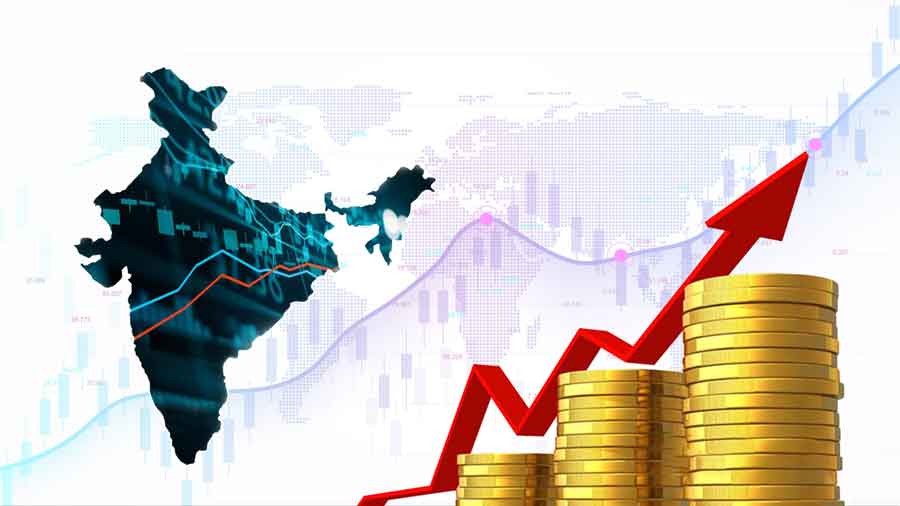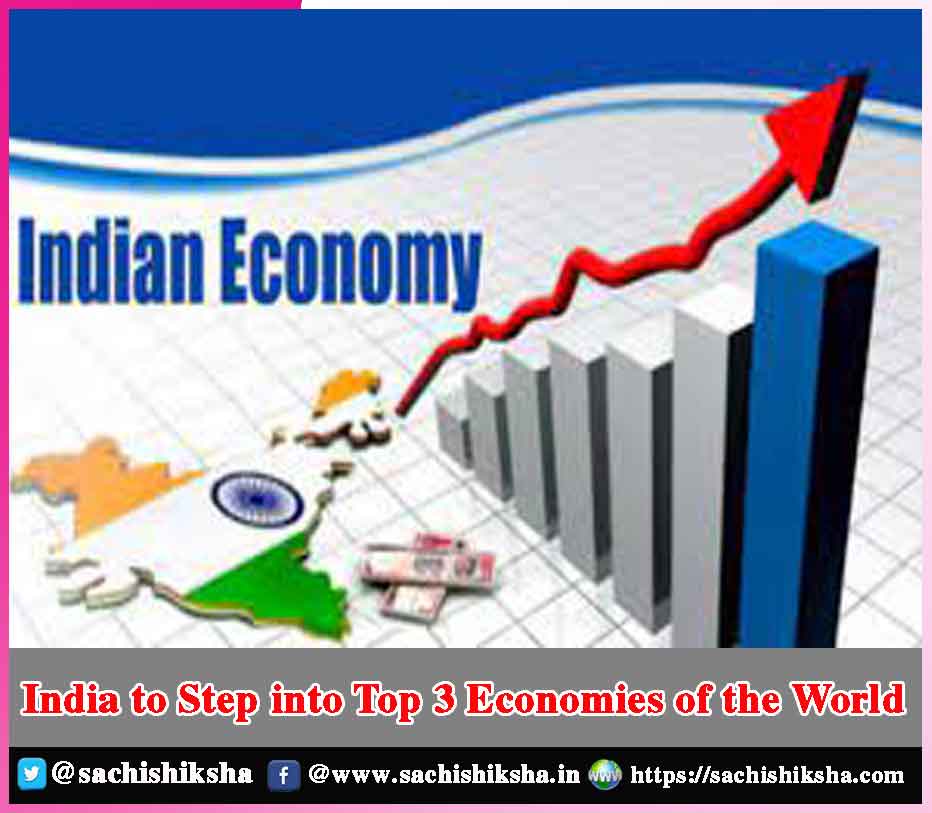India to Step into Top 3 Economies of the World
Introduction: The Indian economy was in turmoil as the nation approached democracy. As a territory, India was meeting the growing demands of a foreign land rather than its own. The government must have been accountable for agricultural and industrial achievements, declined to take even a tiny role in this area. On the other hand, over the half-century preceding India’s independence, the world witnessed faster growth and development in both agriculture and industry, owing to the governments’ active engagement.
Table of Contents
Economy during the British Rule:

The necessity to produce development and growth was high on the political leadership’s agenda, as the nation depended on its assurances and feelings of national happiness. By 1956, many critical and strategically important choices had been made that are currently defining India’s economic destiny.
Macro-stability & the Capex:
The major financial services company Morgan Stanley has raised India’s market position to overweight from a comparable weighting. The organization considers that India’s improvements, combined with its macro-stability, i.e., essential economic variables such as consumer demand and results, current account settlements, revenue from taxes and expenditures, and deposits and savings, are contributing to robust the Capex i.e., investment in capital utilized by an organization to purchase, improve, and upkeep tangible assets which means as real estate, manufacturing facilities, technology, or machinery, and earnings perspective.
Covid-19:
The economy of the country deteriorated because of the Pandemic COVID -19 crisis which caused the economic expansion rate to fall to roughly 6.1% in 2018, and 4.2% in 2019. The reasons for the decline in growth are a fragile financial system, partially implemented international trade policies, and the country’s restricted revenue generation during the outbreak of the pandemic.
Demonetization & GST:
Furthermore, demonetization and GST (Goods and Services Tax) had an impact on development during the very first implementation period. The agriculture industry assisted immensely to the steady restoration by being the least hit business during the pandemic’s peak. Following that, huge amounts were spent to combat the pandemic and provide fundamental necessities to underserved areas of the nation.
Flexible Macro Fundamentals:
According to the business, India’s macro fundamentals remain flexible, and the economy is on line to meet the 6.2% GDP prediction. Despite favorable foreign outflows stable macroeconomic conditions, and an upbeat profitability forecast, India has ascended a place among the youngest economies. Morgan Stanley researchers see India’s capacity to utilize multi polar in nature world circumstances as a big opportunity.
India Versus China:
According to the company’s experts, India is at the start of an extended expansion, which may coincide with the conclusion of the Chinese boom. This most likely justifies elevating India to overweight and lowering China to a comparable weight. According to the trading firm’s analysis, the current scenario in India is starkly different from that in China. With a GDP per capita of $2.5k in India versus $12.7k in China and strong demographic patterns, it appears that India is at the commencement of a long-term expansion.
Critical Variables:
India may be on pace to become the third-biggest economy in the world in the years ahead, but a variety of variables, such as the economic achievements of other nations, the acquiring skills of our job market, and a prolonged rebound in domestic consumption popularity, will be critical for accomplishing this. In the opinion of analysts, the Indian economy has the capacity to continue expanding at a solid 6.5-7% each year.
Estimations of IMF:
According to IMF estimations and internal projections, India is on track to become the world’s third largest economy. Our actual growth rate for development is around 33%, our overall current account surplus is shrinking, and the demographic dividend that we pay is beginning to bear fruit.
Obstacles Faced & Workforce Development:
India has also met the obstacles posed by the Russian-Ukraine war, which has resulted in supply-chain delays for a number of nations. Although generating lucrative employment for people in the workforce while implementing new technology such as AI to boost efficiency has to be prioritized first. A significant portion of the government resources would have to be utilized for workforce development and re skilling.
India’s Strong Areas:
Aside from GDP, India is performing stronger in other areas, such as gross economic credit card debt, which is approximately 170% of GDP. Japan has the highest debt-to-GDP ratio, at more over 400%, while China is approximately 300% and Germany is at 190%. According to IMF forecasts, India surpassed the United Kingdom and became the world’s fifth largest economy in September, trailing only the United States, China, Japan, and Germany.
Further Predictions:
The Indian economy expanded at a 7.2% annual rate in 2022-23 and is predicted to develop at a slower rate of 6-6.5% this fiscal year. A variety of organizations are anticipated to revise their fiscal year economic expansion forecasts after the first quarter GDP data is revealed on August 31.
India could surpass Japan as the world’s third-biggest economy if it continues to expand at the rate it is now or accelerates its growth further. Moreover the third and fourth strongest economies may have to maintain their expansion at the rate they are now or at a rate that is less rapid. Primarily to the global economic slump, outside demand has been dampened, and domestic demand is still struggling to recover. These continue to be barriers to greater growth, making a return to 7% to 8% growth unlikely. According to many sources, India might become the world’s third largest economy by 2030, if not sooner.
Projections of IMF:
India will be a $ 3.7 trillion economic in 2023, retaining its dominance over the United Kingdom as the world’s fifth-biggest economy. In accordance with IMF projections, India would rise to fourth place in 2025 and third place in 2027, with a GDP of $5.4 trillion.
According to a current SBI Ecowrap analysis, India is anticipated to be the third largest economy in 2027 (or FY28) based on real GDP statistics as of March 2023, surpassing both Germany and Japan. Beneath this acceleration, India must grow at an 8.4% CAGR (in dollar terms) until 2027. “This amounts into 11-11.5% nominal GDP growth per year (in Rs terms), which is easily doable with a 6.5-7% growth rate,” according to the paper. According to the IMF’s World Economic Outlook Update for July 2023, the German economy would decrease by 0.3% in 2023 and expand by 1.3% in 2024.
Conclusion:
India has the world’s fastest expanding economy. The country is ranked sixth among the world’s major economies. By 2030, the country is predicted to be ranked third in the world’s top economies. There are several more challenges to address, such as poverty, sustainable development, and increased economic growth.















































